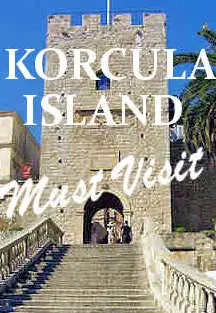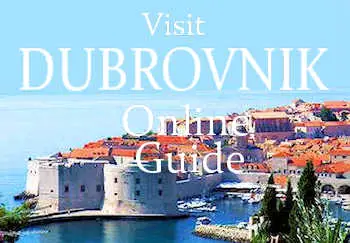The intricately carved Venetian architecture and wide, welcoming harbour of Hvar Town has helped make Hvar Island the most visited of all southern Dalmatian islands. The core of the old town is marked by a profusion of elegant old buildings punctuated by majestic St Stephen square. Above lies a striking fortress and on either side a seaside promenade winds around pine-fringed coves and pebbly beaches. Just offshore are the verdant Pakleni Islands easily reachable by boat.
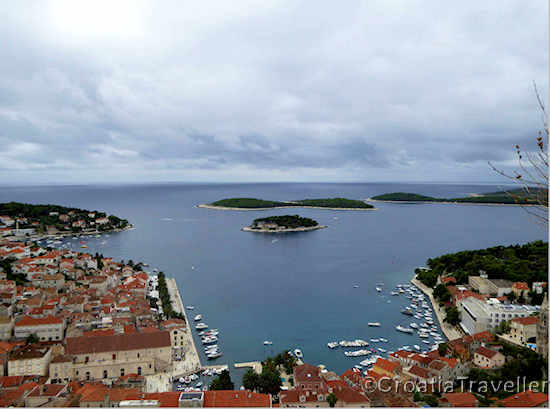
There's plenty of accommodation at all levels, the party scene is legendary, restaurants are excellent and it's even possible to visit the town on a day trip from Split.
things to see
Katedrala Sv Stjepana
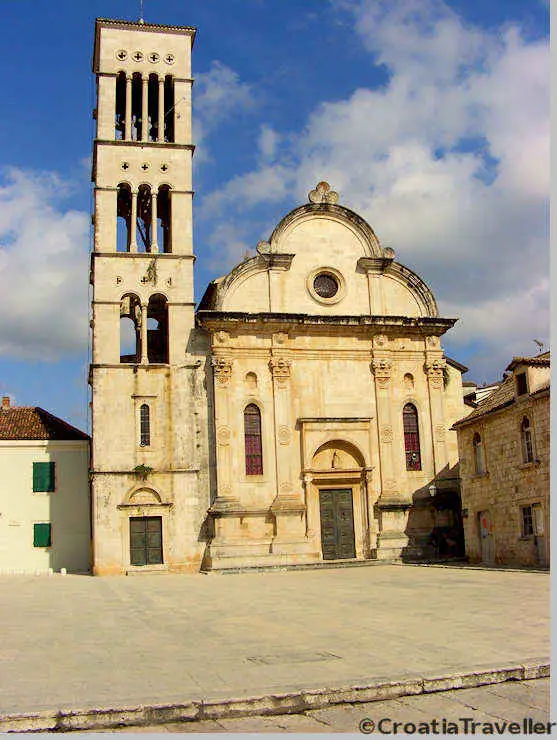
The 16th-century St Stephen cathedral lies the head of the superb Renaissance square of the same name that sprawls over 4500 sq meters. It's the largest square in Dalmatia and it was here that official announcements were made when Hvar was under Venetian rule. The style is typical of piazzas built under the Venetian empire. Notice the 16th-century well at the northern end of the square. Now, the square is lined with cafes and small businesses but the impressive architecture is intact.
The cathedral was erected on the foundations of a gothic sanctuary and elegantly marries Renaissance and baroque styles. Although damaged by a Turkish raid in 1571, it was rebuilt in the 16th and 17th centuries. The stone is from Korcula and certain elements of the facade recall the celebrated cathedral of Sibenik with a trefoil gable and oculus. The interior contains a number of Italian paintings, the best of which is a Flagellation of Christ by Giorgio da Sebenico. Opening hours are 30 minutes before the twice daily mass, longer in summer.
Bishop's Palace
Lying behind the tower, the highlight of this museum of church treasures is a richly embroidered liturgical cloak, replete with flying angels, apostles and saints. Although its origins are unclear, probably dating back to the 16th century, the crimson velvet garment is a stunner. There are also various liturgical vessels and religious paintings. Opening hours are 9am-noon and 5-7pm.
Hanibal Lucic Summer Residence
Behind the Bishop's Palace is the restored summer villa of one of Croatia's greatest poets, Hanibal-Lucic-Lucio who wrote the first drama to be written in the Croatian language, La Schiava. His residence is a beautiful example of Dalmatian Renaissance architecture and contains paintings, furnishings, a collection of medals and a portrait of the poet. The residence also contains the Natural History Cabinet of one Doctor Bučić, a strange and eclectic collection of preserved plants, fossils, photos and old books on the natural history of Hvar. Opening hours are 9am-1pm and 5-11pm in summer only.
Benedictine Monastery
The benedictines of Hvar became expert in creating fabric from agave leaves. Extremely detailed lace from agave leaves are on display here. Opening hours are 10am-noon and 5-7pm Monday to Friday.
Franciscan Monastery
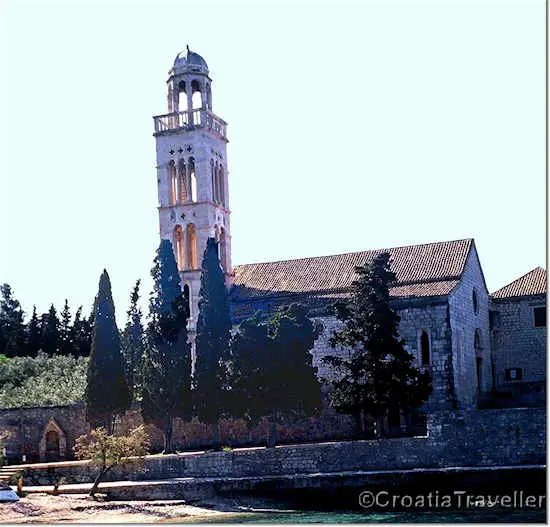
Easily recognizable by its high bell tower, this 15th-century monastery is about a 5-minute walk south of Riva. According to legend, its construction was financed by a Venetian naval officer who escaped from a shipwreck. Maybe. But it's known that the admiral of the Venetian fleet, Piero Soranzo, also had a lot to do with it. The most striking feature of the facade is the stone relief carved by Nikola Firentinac in 1470 showing half-figures of the Virgin and Child Adored by Angels. Inside the church is a complex and beautiful rood screen with a triptych and polyptych by Francesco Santacroce. Notice too the two magnificent altarpieces by Leandro Bassano (1557-1622). The striking Last Supper in the refectory is said to be from Matteo Ponzoni, a Dalmatian master. In the convent is the carved, wooden Winged Dragon which came from the prow of a ship at the famed battle of Lepanto in 1571. The church interior is known for its excellent acoustics and hosts classical concerts each summer.
Fortica (Spanjola)
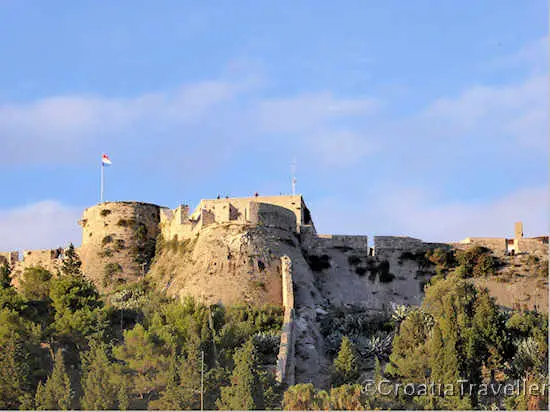
Looming over Hvar town, high on a 100m hill, is this fort built by the Venetians in the 16th century. It has been carefully restored to reveal a complex system of bastions, a tower, living quarters, a chapel, a dungeon, corridors, embrasures and parapets. Great for kids! There's an exhibit of amphorae but perhaps the main interest of Fortica is the spectacular views it affords of Hvar town and the offshore islands. More.
Arsenal and Theater
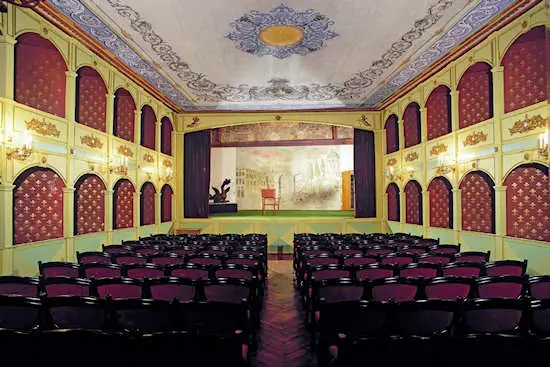
Just over the Arsenal, this Renaissance jewel was the first public theater in Europe. Opened in 1612, the inscription over the entrance recalls that the year corresponds to the second year of Hvar "peace and equality among the citizens". Open to all classes, the theater was nonetheless for men only until late in the 19th century when women were permitted to enter. Plays have been staged here for centuries but only for small audiences as the ancient building is too fragile for crowds. After years of renovation the tiny theater has finally re-opened. Enter through the adjoing Gallery of Contemporary Croatian Art.
Beaches and Beach Clubs
Although true beach-lovers will want to check out the beaches on the Pakleni Islands and Jelsa, there are options closer to town. Stroll the seaside promenade west of town and a string of rocky coves provide wonderful bathing spots.
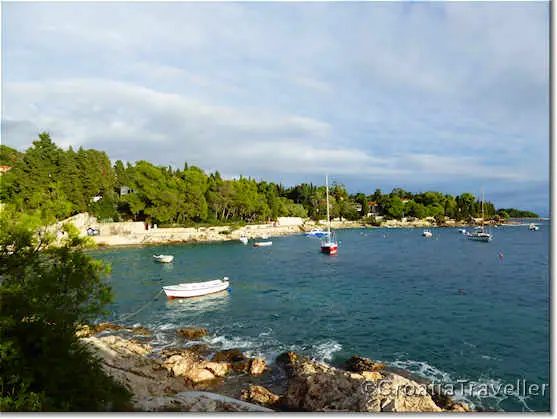
Hula-Hula Beach Bar is about a 2km walk west of town on a quiet cove. From breakfast to after-dinner cocktails, it's a lovely spot but sunsets are the best time.
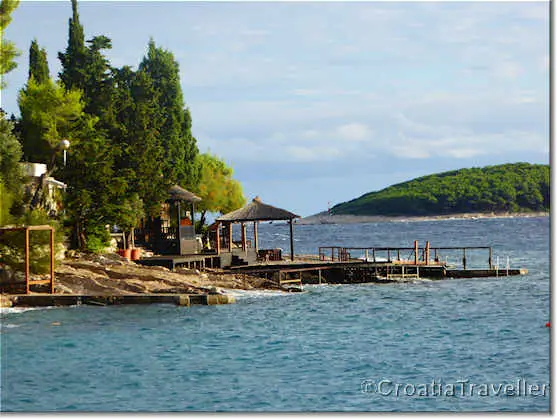
Carpe Diem nightclub and lounge manages a luxury beach club on Stipanska island and runs visitors out on a private boat. See more at the Carpe Diem website.
For big-time pampering, head to the venerable Bonj ‘les bains’ outside the Amphora Beach Resort Hotel. Lounge on mattresses in a private baldachin, spring for a relaxing massage or take in the stunning views on a comfortable beach chair.
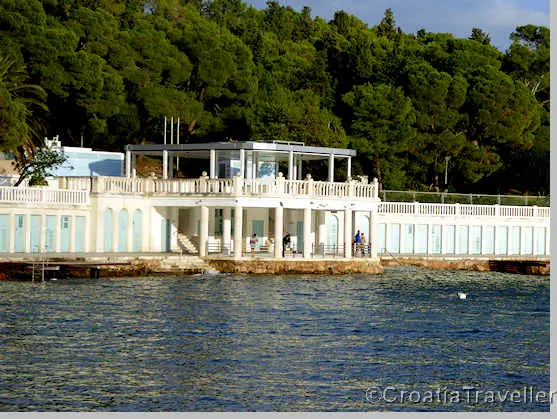
See more at the Bonj 'les bains' website.
Accommodation in Hvar Town
Most of the hotels in Hvar Town were built during the Tito era when bigger was better and biggest was best. In the last decade they have been completely overhauled and are now palaces of luxury and refinement. There are a number of hotels around the harbour, only steps from the water, offering a complete resort experience and several in the town center. See my tips and recommendations for Hvar hotels.
There's also plenty of private accommodation as vacation apartment construction crawls steadily uphill. By the way, "uphill" may not necessarily be where you want to be. See more tips and recommendations for private accommodation in Hvar.
No matter which you choose, book as far in advance as possible for the July-August summer season. The entire island can and does get booked out.
Dining
The two crops that define Hvar cuisine have been grown since Illyrian times in the 6th-century BC: wine and olive oil. Plavac mali is the wine grown on Hvar's southern slopes and it accompanies many a meal. Fish and seafood are staples of the local diet and are served either grilled and seasoned with olive oil and herbs or in stews. Look for gregada, a fish stew slow simmered with onions.
Restaurants in Hvar turn out wonderful but basic dishes, predominantly of fish, seafood and pasta but the menus can be monotonous as they cater to conservative local tastes. There's more variety in hotel restaurants that serve an international clientele.
See Hvar restaurant recommendations.
hvar party scene
Despite its undeniable architectural beauty, Hvar town is becoming more known for an increasingly wild party scene. The legendary bars that once attracted Prince Harry, Beyoncé and other luminaries are now crammed with highly intoxicated young people, mostly British, in various stages of undress.
Formerly confined to evenings, now the party is 24/7 all summer long. Carpe Diem is the center of the harbourside scene; Hula-Hula Bar is just a short walk away along the coast and Kiva Bar livens up the side streets among many, many other bars. At night, the party moves offshore to the Pakleni Islands and the Carpe Diem Beach Bar. Off-season, Hvar town quiets down considerably and if you head to Jelsa or Stari Grad you'll find a much quieter and more family-friendly atmosphere. Get more details on Hvar bars and clubs.
Getting To Hvar Town
Most people travel to Hvar Island by ferry. Stari Grad and Sucuraj receive car ferries and Hvar Town receives passenger boats. Buses meet most ferries landing in Stari Grad and some ferries landing in Sucuraj.
[See more on getting around Hvar island]
There are passenger boats from Split to Jelsa all year and from Jelsa there are frequent buses to Hvar town although buses do not meet every ferry. There's a passenger boat from Split to Hvar Town that runs all year (although more frequently in summer) and goes on to Korcula.
There are a number of other passenger ferries running from Dubrovnik to Split that stop at Hvar town and other islands. The routes are seasonal though, beginning in mid-spring and ending in mid-autumn.
[See ferry details on getting to Hvar island]
Passenger ferries dock right in the center of Hvar harbour, only steps from the heart of the old town.
History of Hvar
Already occupied by the Illyrians, Hvar developed further under the Greeks from Paros island. The Romans soon followed and brought vines and wine cultivation which blossomed into a major industry for the island. The Venetians arrived in the 14th century, moving their capital from Stari Grad to Hvar town because of the sheltered harbour. Although they offered protection from the pirates of Omis, they were widely despised. Violent clashes and uprisings occurred periodically and were ruthlessly suppressed. Nevertheless, most of the town's beautiful Renaissance architecture dates from the 16th and 17th centuries when the town was under Venetian rule. See more on the history of Hvar Island.
Tourist Information in Hvar Town
The Hvar tourist office (tel 021-742 977) is in the Arsenal building just steps from the harbour.
Join the Croatia Traveller Group
Recommended Experiences
©CroatiaTraveller 2005-2024 All rights reserved

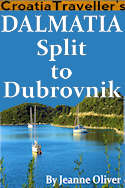
 Hvar Travel Planner
Hvar Travel Planner 

 Stari Grad
Stari Grad Jelsa
Jelsa Vrboska
Vrboska Map of Hvar Island
Map of Hvar Island Hvar/
Hvar/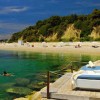 Best Beach Clubs
Best Beach Clubs Getting to Hvar
Getting to Hvar Getting Around Hvar
Getting Around Hvar